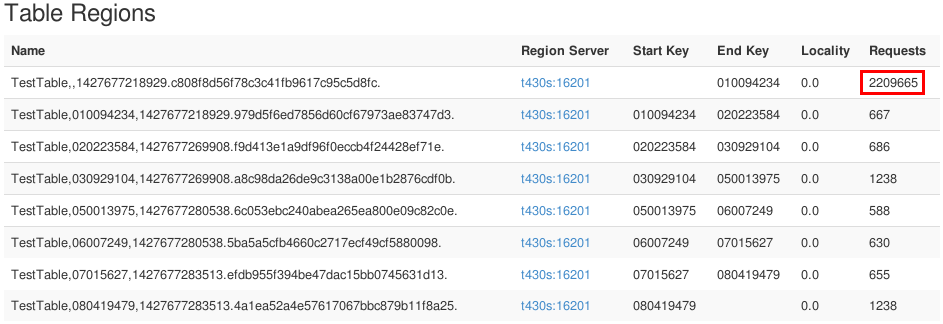Chapter 16. Hotspotting
As previously discussed, to maintain its parallel nature, HBase takes advantage of regions contained in RegionServers distributed across the nodes. In HBase, all read and write requests should be uniformly distributed across all of the regions in the RegionServers. Hotspotting occurs when a given region serviced by a single RegionServer receives most or all of the read or write requests.
Consequences
HBase will process the read and write requests based on the row key. The row key is instrumental for HBase to be able to take advantage of all regions equally. When a hotspot occurs, the RegionServer trying to process all of the requests can become overwhelmed while the other RegionServers are mostly idle. Figure 16-1 illustrates a region being hotspotted. The higher the load is on a single RegionServer, the more I/O intensive and blocking processes that will have to be executed (e.g., compactions, garbage collections, and region splits). Hotspotting can also result in increased latencies, which from the client side create timeouts or missed SLAs.

Figure 16-1. Region being hotspotted
Causes
The main cause of hotspotting is usually an issue in the key design. In the following sections, we will look at some of the most common causes of hotspotting, including monotonically incrementing or poorly distributed keys, very small reference tables, and applications ...
Get Architecting HBase Applications now with the O’Reilly learning platform.
O’Reilly members experience books, live events, courses curated by job role, and more from O’Reilly and nearly 200 top publishers.

